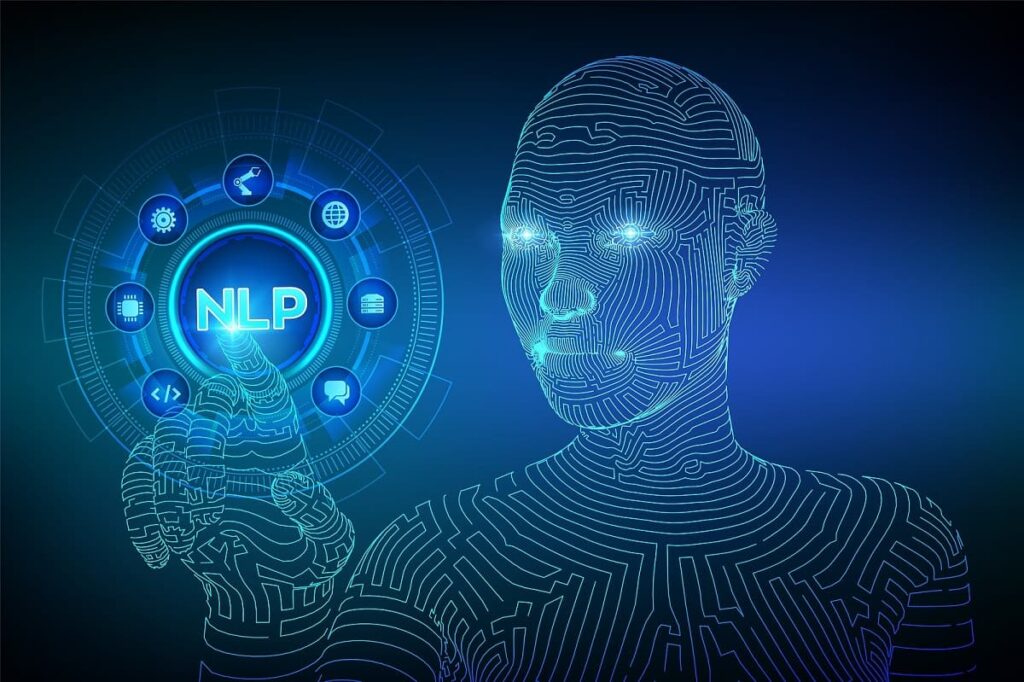5 Natural Language Processing Companies Using GPT-3
Table of contents

Back in the 1960s, Joseph Weizenbaum of the MIT Artificial Intelligence Laboratory created one of the first chatbots, which he named ELIZA. Weizenbaum modeled its conversational style after Carl Rogers, a psychotherapist who was known for parroting patients’ responses back at them. His hypothesis was that while chatbots could emulate human conversation superficially, they could not fully capture the nuances of a genuine discussion between humans. To Weizenbaum’s complete surprise, ELIZA did end up fooling many people into believing they were having a therapeutic breakthrough with a real live therapist.
Natural Language Processing and the Muppets
While modern customer service bots aren’t likely to help customers dig deep into their psychological issues, the technology behind computers processing human language is getting more advanced day by day. Known as natural language processing (NLP), we covered some of the basics behind NLP in previous articles on use cases ranging from spotting fake news to transcribing text to audio, and much more. Unlike Weizenbaum’s simple script for ELIZA that required edits to change the chatbot’s output, the latest advances in NLP rely on deep learning to gather information from massive datasets (like the internet) and train an AI to create its own unique output based on user inputs, like a question from a customer or an email to a manager. Language models are used to predict the likelihood of a sentence existing and making any sense, and programmers can tweak the model to help an AI better learn how to respond appropriately. And hopefully, not offend the delicate sensibilities of those people whose job they think it is to tell the world what to say or not say.

Ever since the Allen Institute for AI published its language model, ELMo, back in 2017, there have many language models developed to optimize for speed, computing power, or accuracy. Of course, computer scientists and programmers always seem to come up with quirky names for their AI creations. Since the release of ELMo, many of the names for the current NLP language models have been ripped straight from Sesame Street, like BERT, Grover, Big BIRD, and KERMIT.
Nonprofit OpenAI, co-founded by TechnoKing of Tesla (TSLA), Mr. Elon Musk, broke away from the Muppet naming convention by publishing its generative pre-trained transformer (GPT) language models. GPT-1 was an early iteration that relied on large, arbitrary datasets to train an AI with a set of parameters in an unsupervised manner, then fine-tune the AI for specific tasks. The research team at OpenAI found out that if they just increased the amount of data and parameters fed into the model by 10X, the AI could predict sentences with better contextual understanding and nuance. Hence, GPT-2, the successor of GPT-1, was born. Like any good experimenter, the AI researchers threw even more data and parameters at the model.
Boom, GPT-3.
Bigger is Better
GPT-3 is one of the largest language models ever created and has taken the world by storm. The model involves 175 billion parameters and 45 terabytes of data. OpenAI has released GPT-3 as their own application programming interface (API) that other companies can use in their software products since the model is too large and expensive for most companies to run. Not to be one-upped, Google (GOOG) researchers trained their own language model that contained over 1.6 trillion parameters.

Many startups and companies are scrambling to make use of these powerful new tools. However, the trouble with wrapping a company’s offerings around GPT-3 and other APIs is that any changes made to the API can affect the product. Also, if OpenAI or Google chooses to increase prices or create a more advanced model, a company will have to pony up or start from scratch. Plus, researchers themselves have acknowledged the limitations of these models, which do not actually understand the text, cannot reason out meaning, and have biases that reflect societal views.
5 Natural Language Processing Companies
Despite the cautions and the hype, the applications of GPT-3 and other NLP are endless and run the gamut of email assistants, language translation, document retrieval, gaming, and dealing with angry customers.
In this article, we take a look at five companies that are using NLP for these types of applications.
Best Friends with a Chatbot
The Turing test is an imitation game created by the father of modern computer science, Alan Turing, to see whether or not a computer AI is capable of thinking like a human. The Turing test has often been used with chatbots to see if they can trick a person into thinking the user is chatting with another human being. While Hugging Face doesn’t quite meet such lofty goals, the company is designing a chatbot that presumably has more sensibility than Microsoft’s (MSFT) Twitter (TWTR) bot, Tay. (Some Redditors figured out the bot would repeat what they said. Hilariousness ensued.) Founded in 2016, the New York-based startup has raised $60.2 million after a successful Series B round to develop open-source conversational AI.

The company created a chatbot to keep bored teenagers glued to their screens, touted as the best artificial best friends forever (BFF). That’s something that teenagers need more now than ever since The Rona shut down schools. Hugging Face’s mobile app relies on OpenAI’s earlier GPT-2 model to augment its chatbot’s capabilities with more response possibilities. The Hugging Face team also recently released an open-source library of NLP applications to help spur innovation in the field of AI for dialogue and conversations. Many tech companies are playing around with Hugging Face’s open-source library and collaborating with the startup, including Amazon, Apple, Facebook, and Microsoft.
An AI D&D Adventure
Utah is home to one of the wealthiest religious organizations in the United States, the Mormon Church, and the spiritual descendants of Brigham Young are hard at work bringing in that green. Founded in 2019, Utah-based Latitude is an AI-powered company that’s designing games with unlimited player freedom and possibilities. It has received a total of $4.1 million in funding to help the Latitude team develop their AI Dungeon, an infinitely generated text adventure game that’s free to play. AI Dungeon was first built out of a hackathon at Brigham Young University.
Why does an unlimited text adventure game matter? When gamers immerse themselves in worlds filled with magic, dragons, and adult fan fiction, they want a fully immersive experience. But when the nearby tavern keeper shares the same pity story about how his wife was taken away by the orcs after only a handful of interactions, gamers start to lose interest in chatting with non-playable characters (NPCs). That’s where Latitude comes in. With better AI, gamers can interact with their social environments and have unlimited storytelling experiences that are never the same each time.

Using the power of GPT-3, Latitude recently produced a premium version of their text adventure game called Dragon and created a multiplayer version of AI Dungeon, aptly called AI Dungeon 2. Users interact with the AI using text commands and storytelling elements, and the AI spits out a unique response every time, sometimes decently insightful and sometimes whacky and bizarre. Despite the hype, Latitude’s games have been described as doing improv with a partner who is as enthusiastic as they are drunk, and better suited for breaking writer’s block rather than for actual gameplay.
My AI Assistant Will Get Back to You
Founded in 2020, OthersideAI is an AI-driven software company based in Los Angeles that takes shorthand notes, summaries, and drunk texts to your ex and turns them into written emails. The company has pulled in $2.6 million to design their nifty little Chrome extension, which applies GPT-3 to the task of transforming your incoherent ramblings into polished emails to your boss. Unlike an autoresponder, OthersideAI’s product acts like an assistant and actually understands what you’re trying to say, creating unique emails based on your inputs.

Users can apply tweaks and changes to the output emails generated by OthersideAI’s software, providing more feedback for the GPT-3 engine to learn from each user’s unique style. These little nuances will help train the AI to do a better job next time. One application of the product is to do away with the obviously copy-and-pasted emails sent by salespeople and allow the AI to add tweaks to make each email more unique. That way, they can spend less time responding to emails and more time playing AI Dungeon on their phone.
AI to Replace Interns
Founded in 2018, the Berlin-based deepset has raised $1.6 million to create open-source software that helps developers use NLP to create search engines for businesses to read through all of their documents and emails. So, basically, deepset is replacing unpaid interns. Like any good software company, deepset has given quirky names to their products, like FARM, Haystack, and German BERT.

The company’s open-source model is based on providing workshops, trainings, and custom services to other companies to help them deploy its free NLP architecture. No word yet on how they plan to make money.
From AI, With Love
Founded in late 2020, San Francisco-based Copysmith is an AI-augmented software startup that’s focusing its attention on the copywriting space. These days, most ads, blog posts, and poorly translated product descriptions on Amazon are written by hungry copywriters paid peanuts on Fiverr. However, Copysmith wants to do away with all that and throw in an AI to do the grunt work. At a bargain monthly price that’s about as cheap as a subscription to Blizzard’s (ATVI) World of Warcraft, Copysmith uses GPT-3 to generate Google ads, Facebook ads, product descriptions, and taglines.

The company has also shown use-case scenarios where Copysmith can write Valentine’s Day cards, love poems, and even Tinder bios. Nothing says ‘I love you’ like an advanced AI-generated message sent by yours truly.
Insert Your GPT-3 Company Here
Not just anyone gets to play around with GPT-3. You’ll first need to request access, and rumor has it the process is akin to pitching on Shark Tank. Once granted access, here’s what you’ll be able to do in a nutshell.
Given any text prompt, the API will return a text completion, attempting to match the pattern you gave it. You can “program” it by showing it just a few examples of what you’d like it to do; its success generally varies depending on how complex the task is. The API also allows you to hone performance on specific tasks by training on a dataset (small or large) of examples you provide, or by learning from human feedback provided by users or labelers.
Credit: Open AI
At the moment, GPT-3 is generating about 4.5 billion words per day. Just days ago, OpenAI published a blog post stating, “Over 300 applications are delivering GPT-3–powered search, conversation, text completion, and other advanced AI features through our API.” So there you have it, your next startup idea. Once you’ve developed your new application around GPT3, drop us a note and we’ll try and sell you our economical content marketing offering to get the word out.
Conclusion
The Guardian newspaper experimented with GPT-3 by prompting the language generator with a paragraph about the safety of AI. What came out was an article that didn’t quite meet the publication’s standards, but was at least coherent and not easily tricked into saying that Ricky Gervais learned totalitarianism from Adolf Hitler. That said, AI technologists and arm-chair philosophers have criticized the project for hyping the technology, mostly because The Guardian staff cherry-picked and spliced the best output from GPT-3 after eight runs.
The model is a far cry from the holy grail that is general AI. That’s the kind that turns Roombas into terminators. While NLP-enabled writing still needs some hand-holding from diligent editors, this branch of AI technology still promises to help lazy writers make ends meet. And just like how Blu-ray revolutionized the adult entertainment industry, we can only expect even more creative uses for NLP in the future.
Sign up to our newsletter to get more of our great research delivered straight to your inbox!
Nanalyze Weekly includes useful insights written by our team of underpaid MBAs, research on new disruptive technology stocks flying under the radar, and summaries of our recent research. Always 100% free.




















Copysmith is not the only player on the market. There is also Scribo AI which is cheaper and faster.
Thank you for the comment. There are likely other players in this space as well.